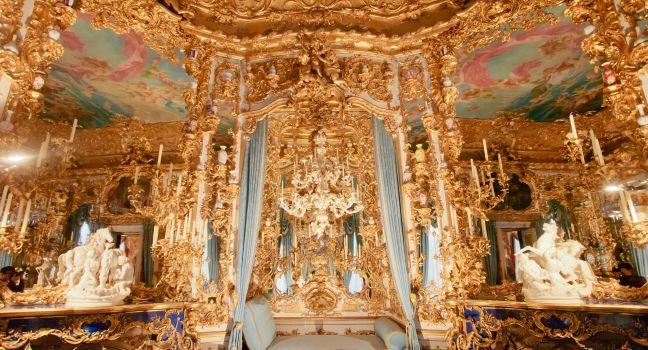Schloss Herrenchiemsee

Despite its distance from Munich, the beautiful Chiemsee drew Bavarian royalty to its shores for its dreamlike, melancholy air. It was on one of the lake's three islands that King Ludwig built Schloss Herrenchiemsee, his third and last castle, which was modeled after Louis XIV's Versailles. As with most of Ludwig's projects, the building was never completed, and Ludwig spent only nine days there. Nonetheless, what remains is impressive—and ostentatious. Ferries leave from Stock, Prien's harbor. You can take an 1887 steam train from Prien to Stock to pick up the ferry. A horse-drawn carriage (from mid-April to late October) takes you from the boat dock to the palace itself. The palace's state rooms can only be visited as part of a 35-minute guided tour; English-language tours are timed to coincide with each ferry's arrival. The most spectacular room is the Hall of Mirrors, and also of interest are the ornate bedrooms, the "self-rising" table, the elaborately painted bathroom, and the formal gardens. The south wing houses a museum about King Ludwig's life. Also on the island is the Augustinian Monastery where Germany's postwar constitution was drawn up in 1948; it is now a museum.




